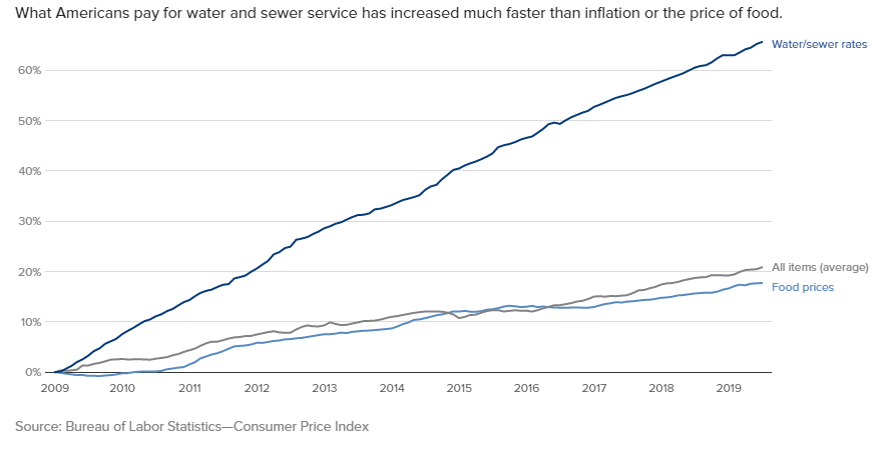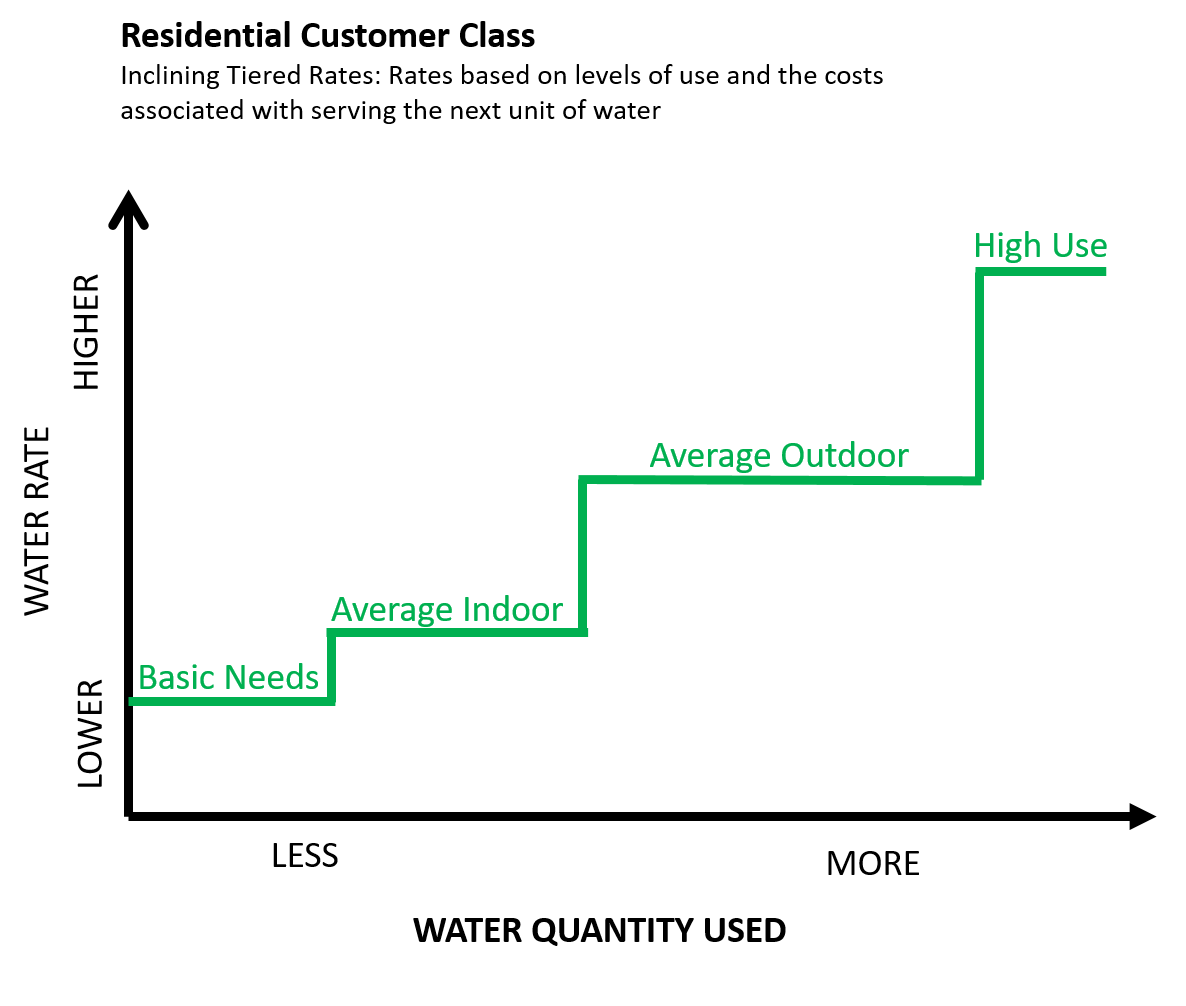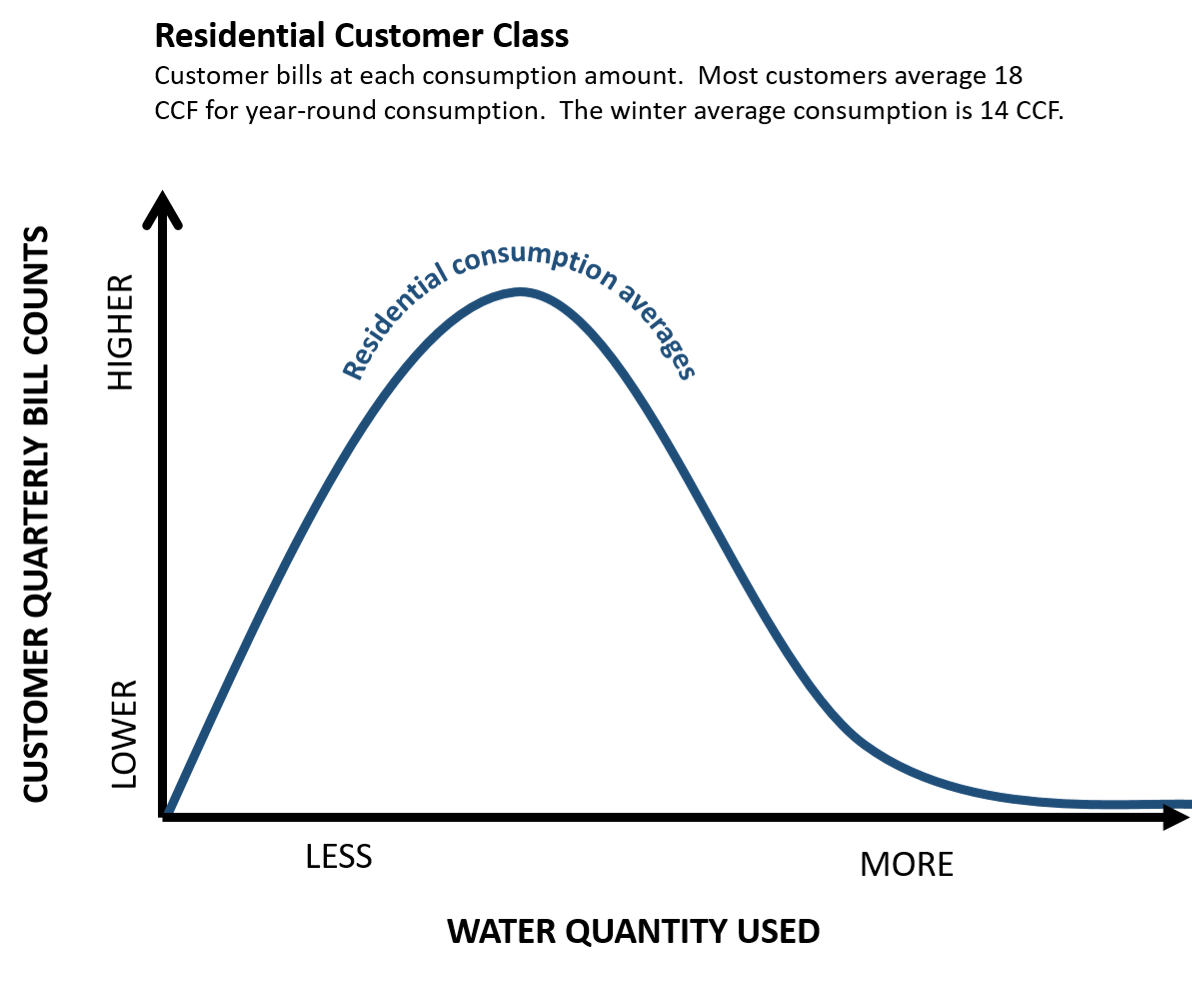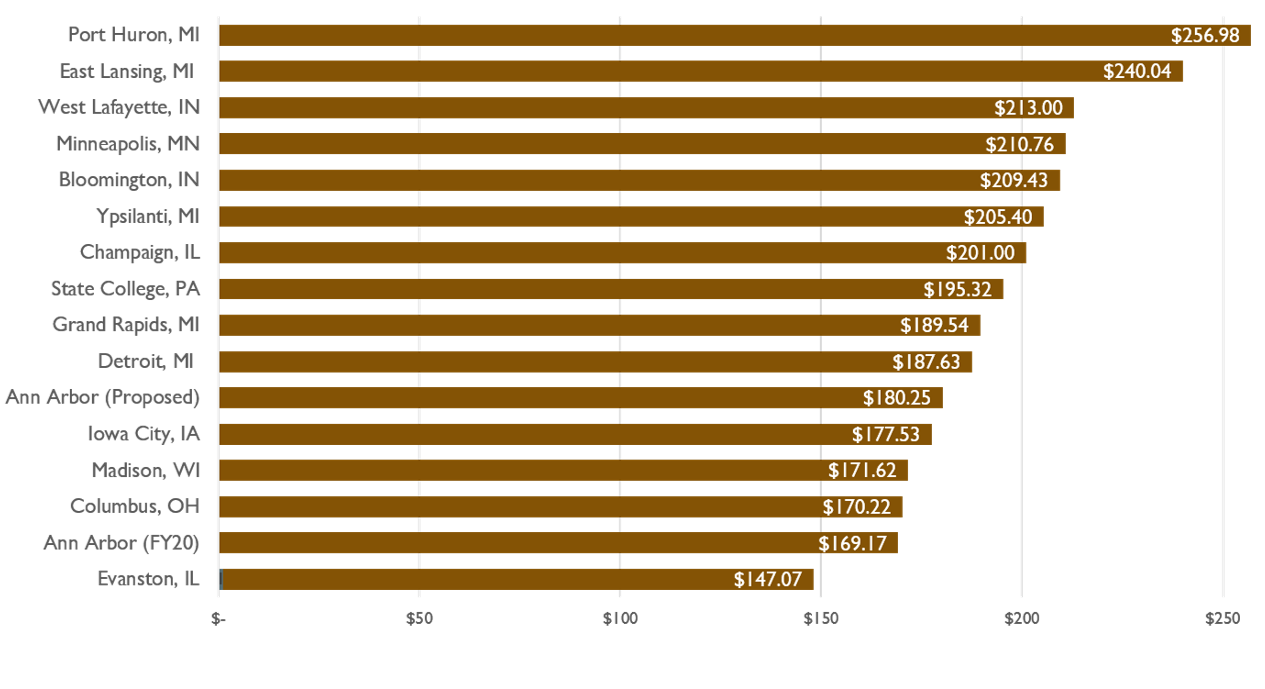Public Services Administration is responsible for recommending water and sewer rates for our Customers. In 2017, the City conducted a cost of service study that determined the revenue required, allocated the cost of the water and sewer system then determined the rate structure to provide revenue needed to continue to operate and invest in our infrastructure.
The comprehensive study provided the structure and target rate increases needed for the planned investments. However, every year the City looks at what conditions have changed to determine if the target rate increases need to be adjusted up or down.
Along with the budget process, typically in May, staff proposes the rate adjustments via ratification of the City Code to City Council.
Why are rate increases higher than the rate of inflation?
Ann Arbor adjust rates specific to the needs of our community each year, however, in general, the U.S. Consumer Price Index for water and sewer are higher than inflation.

How Does Ann Arbor Allocate the Costs for Tiered Water Rates? Or, Why are the prices between tiers 1 and 4 so different?
Tiered water rates are a method of providing a fair and equitable allocation of the costs for reliable water service. 
The method is based on the following key principles:
- The lowest cost water service should be dedicated to basic health and safety customer needs (drinking, bathing, sanitation), followed by efficient irrigation and other beneficial uses.
- Peak summer demands for landscape irrigation increase overall costs for the utility. The water utility must build, operate, and maintain water supply and distribution infrastructure sufficient to deliver the maximum amount of water required during the summer months.
- The costs of building and maintaining infrastructure sufficient to deliver greater quantities of water during the summer should be paid by customers who use greater quantities of water during the summer. Likewise, low-use customers should not be required to cover the costs to deliver greater quantities of water that they do not use.
Through a cost of service study, water supply and distribution infrastructure costs are determined to meet base (year-round) and peak (summer) water demands. The residential portion of these costs are then allocated to different tiers based on levels of use. The lowest-cost water supplies are allocated to the lowest tiers to serve basic needs, the next lowest-cost water supplies are allocated to the middle tiers to serve average year-round needs, and the highest cost water supplies and peak infrastructure costs are allocated to the highest tiers to serve peak summer water needs. The result is a rate structure that fairly allocates water utility costs to all customer classes and levels of use.
Why don't we charge uniform rates like they do for Non-residential customers and Multi-family?
 Elimination of water rate tiers by transitioning to a uniform volumetric rate would simply mean that costs are lumped together with no prioritization for how water is used. This methodology would have the impact of increasing the costs of customers who use less water overall. The lowest cost tier, which every residential customer receives, would increase if water costs were simply averaged to create a uniform volumetric rate. As a result, the 63% of customers who currently do not use water outside the lower cost tiers would see an increase to their water bills. Low-income and fixed income customers would be the most significantly impacted. They would now be incurring the costs associated with peak system infrastructure requirements even though they are most typically not the customers causing the need. The residential customers who will benefit from this approach will only be high water use customers.
Elimination of water rate tiers by transitioning to a uniform volumetric rate would simply mean that costs are lumped together with no prioritization for how water is used. This methodology would have the impact of increasing the costs of customers who use less water overall. The lowest cost tier, which every residential customer receives, would increase if water costs were simply averaged to create a uniform volumetric rate. As a result, the 63% of customers who currently do not use water outside the lower cost tiers would see an increase to their water bills. Low-income and fixed income customers would be the most significantly impacted. They would now be incurring the costs associated with peak system infrastructure requirements even though they are most typically not the customers causing the need. The residential customers who will benefit from this approach will only be high water use customers.
How do our water and sewer rates compare to other communities?
Overall, based on average consumption, Ann Arborites are on the lower end for benchmarked communities for water and sewer rates. Not all communities are the same in how they treat water and the level of service they provide, however, Ann Arbor continues to provide safe, reliable, high quality water services at a great value. A comparison of Ann Arbor residential customers and some peer mid-Western communities are below. The total bills compare a household consuming 18 CCFs of water and receiving the early payment discount.

I use a lot of water for my garden to grow food that enhances the City or water trees that help the stormwater system, why do I have to pay the higher tiers?
First, thank you! The City and the community values your contributions to food security and the environment. The amount of tree canopy can provide a financial benefit to you by reducing the billable impervious area and the same with gardening area that is not pervious payment. For your water bill, the tiers were determined on a cost basis, so, per State law, we are unable to provide any discounts based on anything other than the cost allocations that were determined through the cost of service study. Also, keep in mind, residential customers received a summer sewer discount, so if you use more water in the summer for your garden, you still pay the winter average on the sewer volume charges because we assume during the summer usage is outdoors and does not return to the sewer system to be treated.
Learn more here: Tier4Tables.pdf
Tier4Tables.pdf
